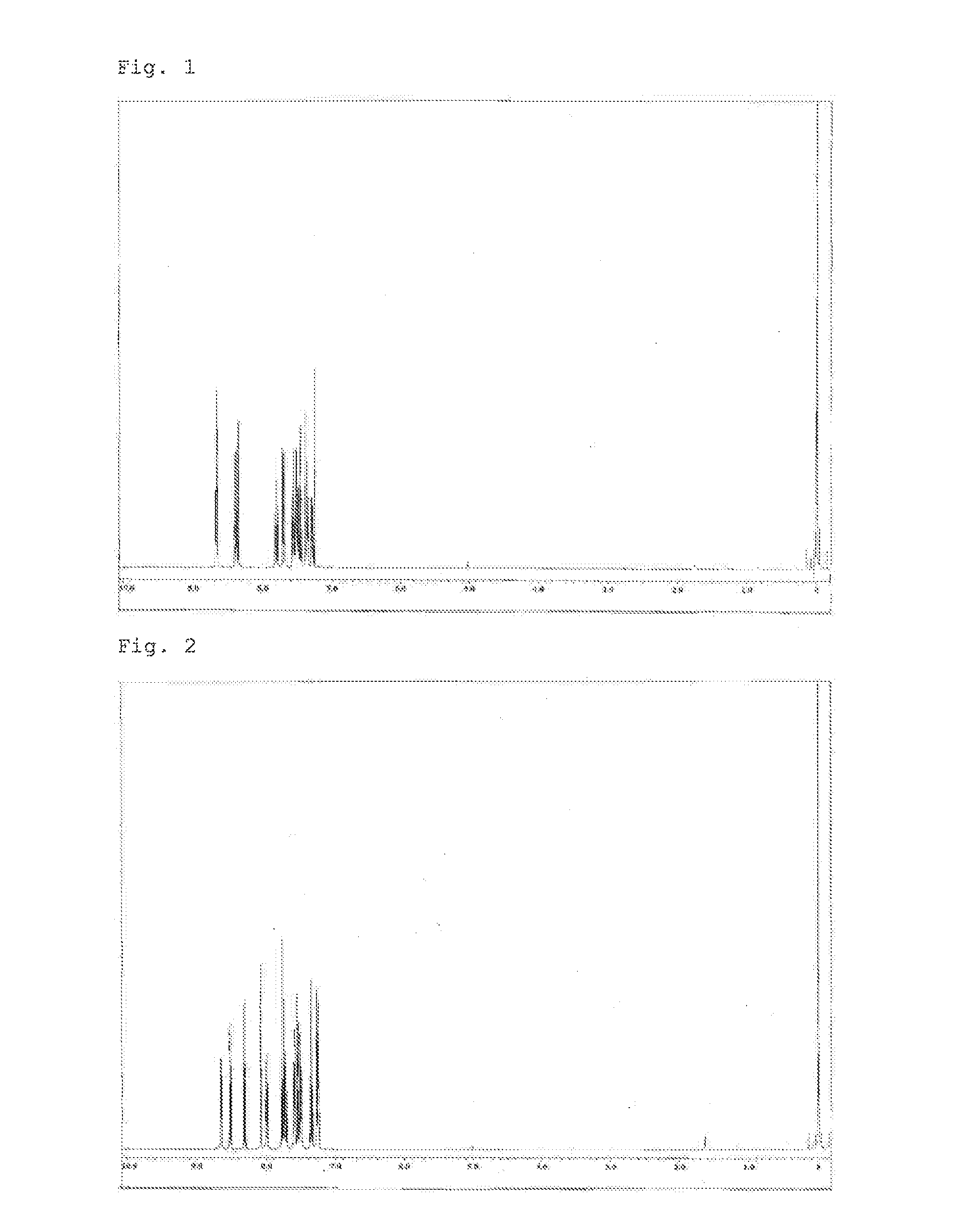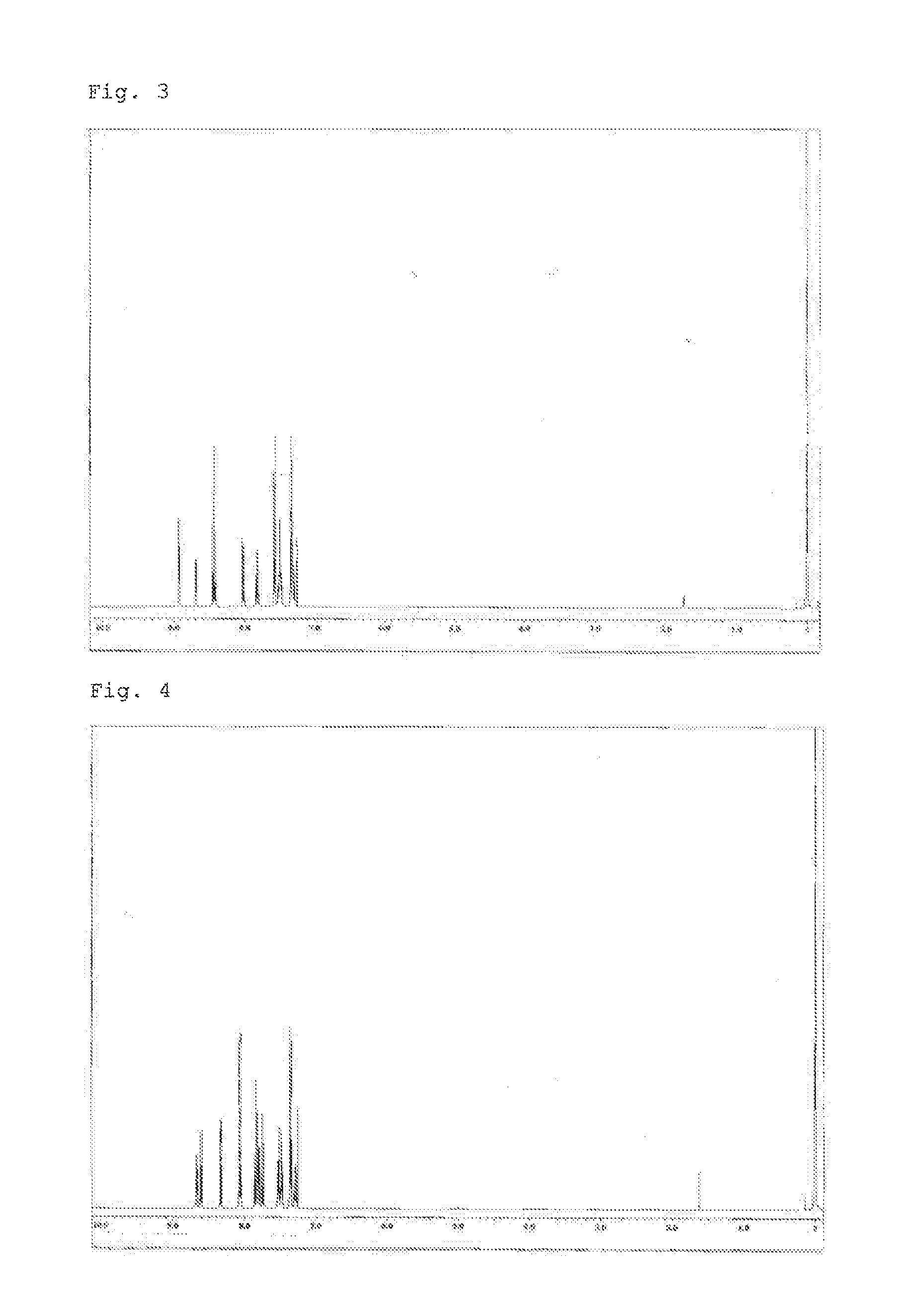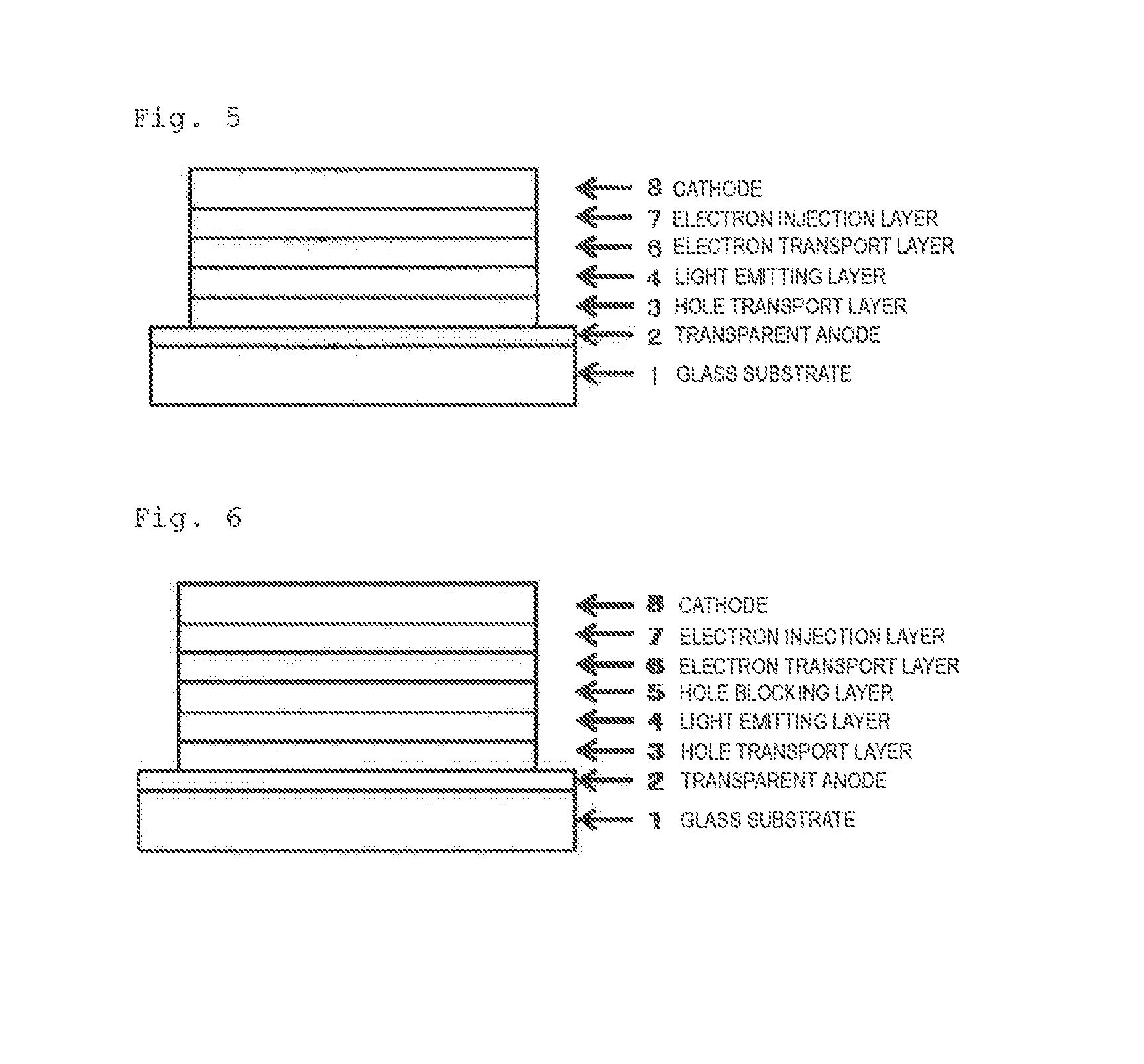Compound having substituted ortho-terphenyl structure, and organic electroluminescent device
- Summary
- Abstract
- Description
- Claims
- Application Information
AI Technical Summary
Benefits of technology
Problems solved by technology
Method used
Image
Examples
example 1
Synthesis of 3,3″-bis(2,2′-bipyridin-5-yl)-1,1′:2′,1″-terphenyl (Compound 2)
[0067]2,5-Dibromopyridine (19.5 g), 2-pyridylzinc bromide (150 ml), tetrahydrofuran (90 ml), and tetrakis(triphenylphosphine)palladium(0) (4.33 g) were added to a nitrogen-substituted reaction vessel. After being cooled, the mixture was stirred at 0° C. for 2 hours, and then at room temperature for 3 hours. The reaction mixture was added to a 10% disodium dihydrogen ethylenediamine tetraacetate aqueous solution, and stirred for 6 hours. The organic layer was collected by separation after adding chloroform (300 ml). The organic layer was dried over anhydrous magnesium sulfate, and concentrated to obtain a crude product. The crude product was purified by column chromatography (support: silica gel, eluent: toluene) to obtain a white powder of 5-bromo-2,2′-bipyridine (11.1 g; yield 63%).
[0068]Separately, 1,2-diiodobenzene (24.4 g), 3-trimethylsilylphenylboronic acid (30 g), sodium hydroxide (8.8 g), tetrakis(tri...
example 2
Synthesis of 3,3″-bis(2,2′-bipyridin-6-yl)-1,1′:2′,1″-terphenyl (Compound 3)
[0074]2,6-Dibromopyridine (19.5 g), 2-pyridylzinc bromide (150 ml), tetrahydrofuran (90 ml), tetrakis(triphenylphosphine)palladium(0) (4.33 g) were added to a nitrogen-substituted reaction vessel. The mixture was cooled, and stirred at 0° C. for 2 hours, and then at room temperature for 3 hours. The reaction mixture was then added to a 10% disodium dihydrogen ethylenediamine tetraacetate aqueous solution, and stirred for 6 hours. The organic layer was collected by separation after adding chloroform (300 ml). The organic layer was dried over anhydrous magnesium sulfate, and concentrated to obtain a crude product. The crude product was purified by column chromatography (support: silica gel, eluent: toluene) to obtain a white powder of 6-bromo-2,2′-bipyridine (11.1 g; yield 63%).
[0075]The 6-bromo-2,2′-bipyridine (1.8 g), the 3,3″-bis(4,4,5,5-tetramethyl-[1,3,2]dioxabororan-2-yl)-1,1′:2′,1″-terphenyl (1.8 g) syn...
example 3
Synthesis of 4,4″-bis(2,2′-bipyridin-5-yl)-1,1′:2′,1″-terphenyl (Compound 10)
[0078]1,2-Diiodobenzene (20 g), 4-trimethylsilylphenylboronic acid (25 g), sodium hydroxide (7.4 g), tetrakis(triphenylphosphine)palladium(0) (3.6 g), diethylene glycol dimethyl ether (240 ml), and water (60 ml) were added to a nitrogen-substituted reaction vessel. The mixture was heated, and stirred at 95° C. for 15 hours. After cooling the mixture to room temperature, water (100 ml) was added, and the organic layer was collected by separation. The organic layer was washed two times with water (100 ml), dried over anhydrous magnesium sulfate, and concentrated to obtain a crude product. The crude product was purified by column chromatography (support: silica gel, eluent: n-hexane) to obtain a white powder of 4,4″-bis(trimethylsilyl)-1,1′:2′,1″-terphenyl (21.1 g; yield 93%).
[0079]The 4,4″-bis(trimethylsilyl)-1,1′:2′,1″-terphenyl (21 g), bromine (11.5 ml), and chloroform (150 ml) were added to a nitrogen-subs...
PUM
 Login to View More
Login to View More Abstract
Description
Claims
Application Information
 Login to View More
Login to View More - Generate Ideas
- Intellectual Property
- Life Sciences
- Materials
- Tech Scout
- Unparalleled Data Quality
- Higher Quality Content
- 60% Fewer Hallucinations
Browse by: Latest US Patents, China's latest patents, Technical Efficacy Thesaurus, Application Domain, Technology Topic, Popular Technical Reports.
© 2025 PatSnap. All rights reserved.Legal|Privacy policy|Modern Slavery Act Transparency Statement|Sitemap|About US| Contact US: help@patsnap.com



